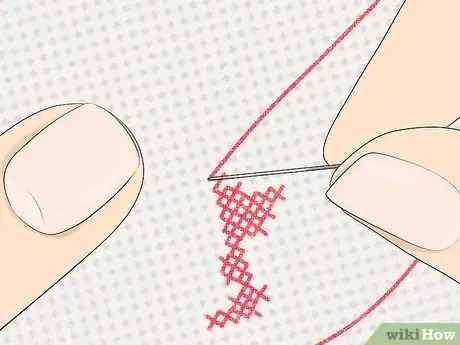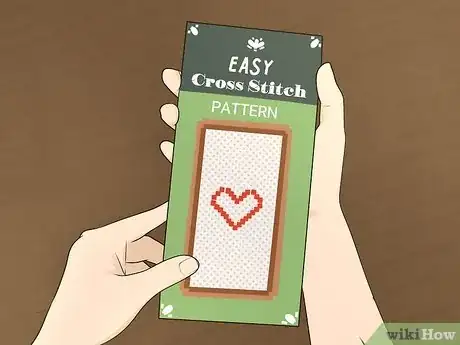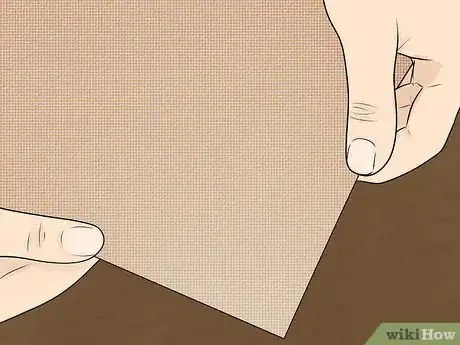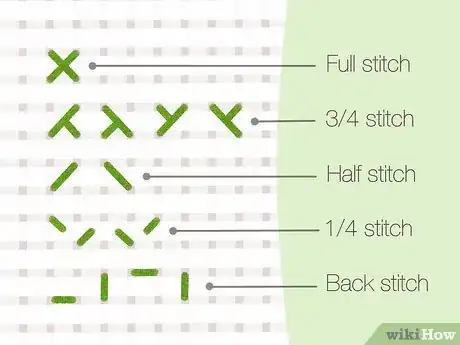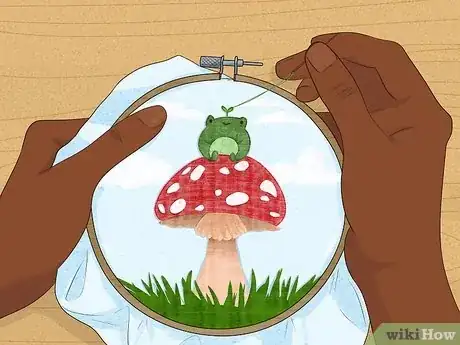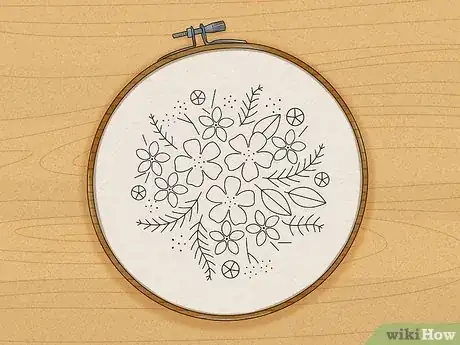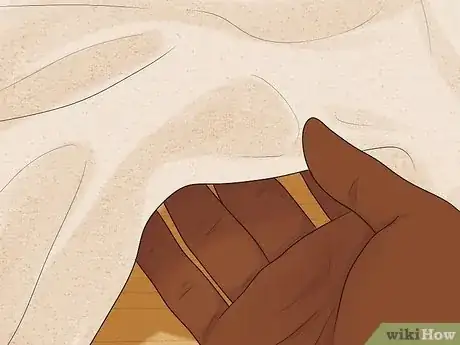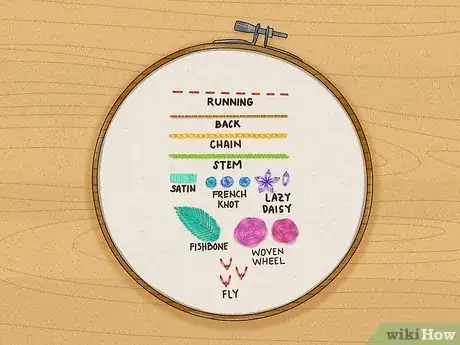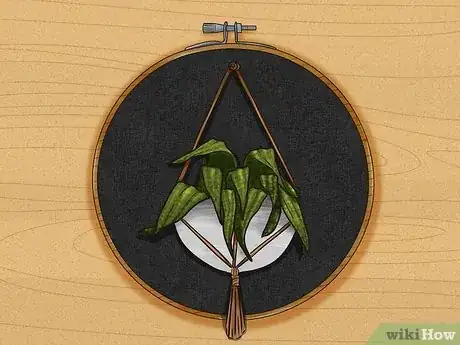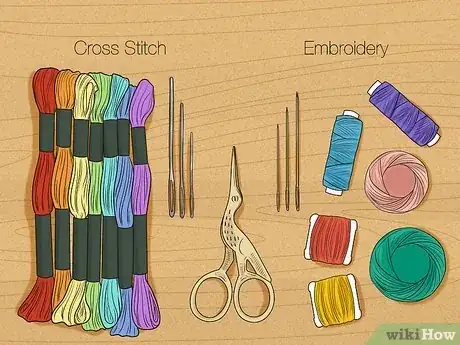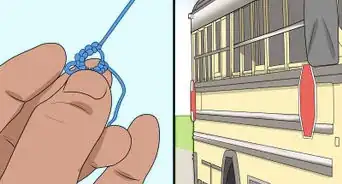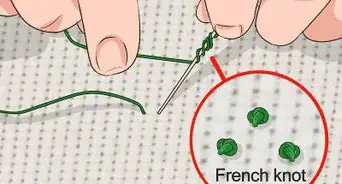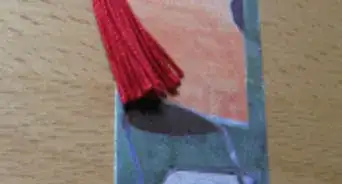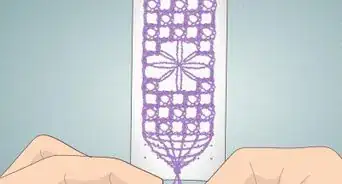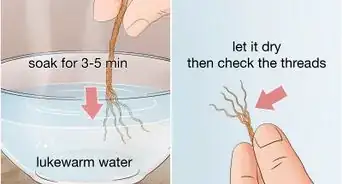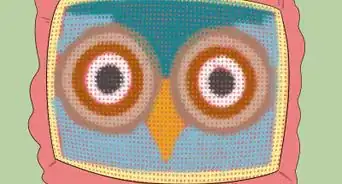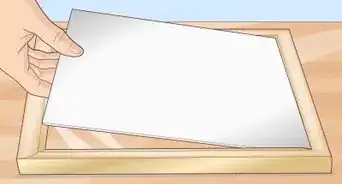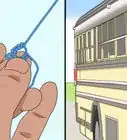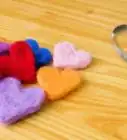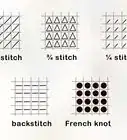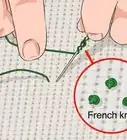This article was co-authored by Amy Guerrero and by wikiHow staff writer, Hannah Madden. Amy Guerrero is an Arts and Crafts Specialist and the Owner of Sunshine Craft Co., a crafting studio based in Phoenix, Arizona. Amy specializes in macrame, DIY crafting, and teaching fiber arts. She offers monthly in-person and online workshops along with having developed a range of DIY craft kits for at-home projects. Amy holds a BS in Industrial Design from Philadelphia University. She worked as a graphic designer before starting her own business. Sunshine Craft Co. is a creative hub that offers a wide range of workshops, tools, and resources for any craft project to inspire creativity and community engagement.
This article has been viewed 1,368 times.
Itching to try out a new crafting project? With the popularity of both cross stitch and embroidery on the rise, it’s no wonder that you’re considering these fun fiber art activities. But if you’re a little confused about the difference between cross stitch and embroidery, you’re not alone—they’re fairly similar, but have some key differences that set them apart. Fortunately, once you get a detailed explanation on each one, they’re easy to tell apart from each other. Keep reading to learn more about cross stitch and embroidery, as well as the differences between them and which one is easier.
Things You Should Know
- Cross stitch is a type of embroidery that mainly uses a single stitch. Hand embroidery uses many different types of stitches.
- Cross stitch is done on Aida cloth with a tapestry needle, while embroidery is usually done on cotton fabric with a sharp needle.
- Typically, cross stitch is easier for beginners to pick up on than embroidery is.
Steps
Expert Q&A
-
QuestionHow can you tell needlepoint from cross stitch?
 Amy GuerreroAmy Guerrero is an Arts and Crafts Specialist and the Owner of Sunshine Craft Co., a crafting studio based in Phoenix, Arizona. Amy specializes in macrame, DIY crafting, and teaching fiber arts. She offers monthly in-person and online workshops along with having developed a range of DIY craft kits for at-home projects. Amy holds a BS in Industrial Design from Philadelphia University. She worked as a graphic designer before starting her own business. Sunshine Craft Co. is a creative hub that offers a wide range of workshops, tools, and resources for any craft project to inspire creativity and community engagement.
Amy GuerreroAmy Guerrero is an Arts and Crafts Specialist and the Owner of Sunshine Craft Co., a crafting studio based in Phoenix, Arizona. Amy specializes in macrame, DIY crafting, and teaching fiber arts. She offers monthly in-person and online workshops along with having developed a range of DIY craft kits for at-home projects. Amy holds a BS in Industrial Design from Philadelphia University. She worked as a graphic designer before starting her own business. Sunshine Craft Co. is a creative hub that offers a wide range of workshops, tools, and resources for any craft project to inspire creativity and community engagement.
Arts & Crafts Specialist Needlepoint works in diagonal stitches rather than Xs to cover the entire surface of the fabric, though both crafts work in a grid.
Needlepoint works in diagonal stitches rather than Xs to cover the entire surface of the fabric, though both crafts work in a grid.
Expert Interview
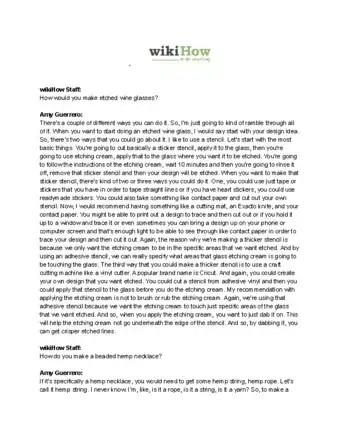
Thanks for reading our article! If you'd like to learn more about doing needlework, check out our in-depth interview with Amy Guerrero.
References
- ↑ https://www.sewinsider.com/cross-stitching-vs-embroidery/
- ↑ https://xstitchmag.com/is-cross-stitch-difficult/
- ↑ https://xstitchmag.com/is-cross-stitch-difficult/
- ↑ https://www.apartmenttherapy.com/beginner-craft-resources-36740051
- ↑ https://www.apartmenttherapy.com/beginner-craft-resources-36740051
- ↑ https://sewguide.com/what-is-embroidery/
- ↑ https://www.dmc.com/uk/p-what-is-embroidery.html
- ↑ https://www.apartmenttherapy.com/beginner-craft-resources-36740051
- ↑ https://www.apartmenttherapy.com/beginner-craft-resources-36740051
